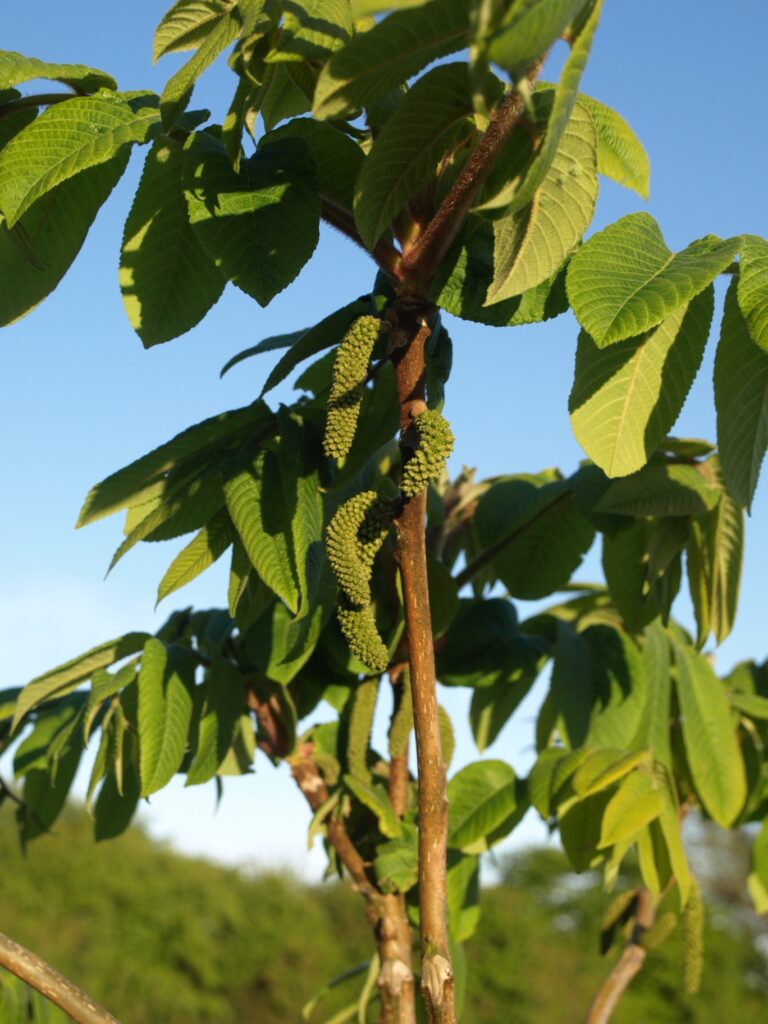A type of Japanese walnut deciduous tree, (family of Juglandaceae and genus Juglans), that produces
an sweet edible heart-shaped nut. The twigs are often as big around as broom handles and the leaves
are compound and can be two to three feet long. With adequate moisture and protection from weed
competition they can put on six to eight feet of height growth per year. A large firmly entrenched taproot
forms a fast-growing, very cold hardy Heartnut tree that is relatively easy to transplant and survive.
The delicious kernel has a high oily content and is very tasty and crunchy when eaten raw or when
toasted. The nuts form in clusters, and each cracks neatly in half, so they are pretty easy to shell.
Technically, the trees are self-fertile but they will set a larger crop if you plant 2 seedlings, 2 different
grafted varieties or a seedling and a grafted tree. It has light grey bark and pinnate leaves with 11 to 17
leaflets. The male flowers are inconspicuous yellow-green catkins produced in spring at the same time
as the new leaves appear. The female flowers have pink/ red pistils.






